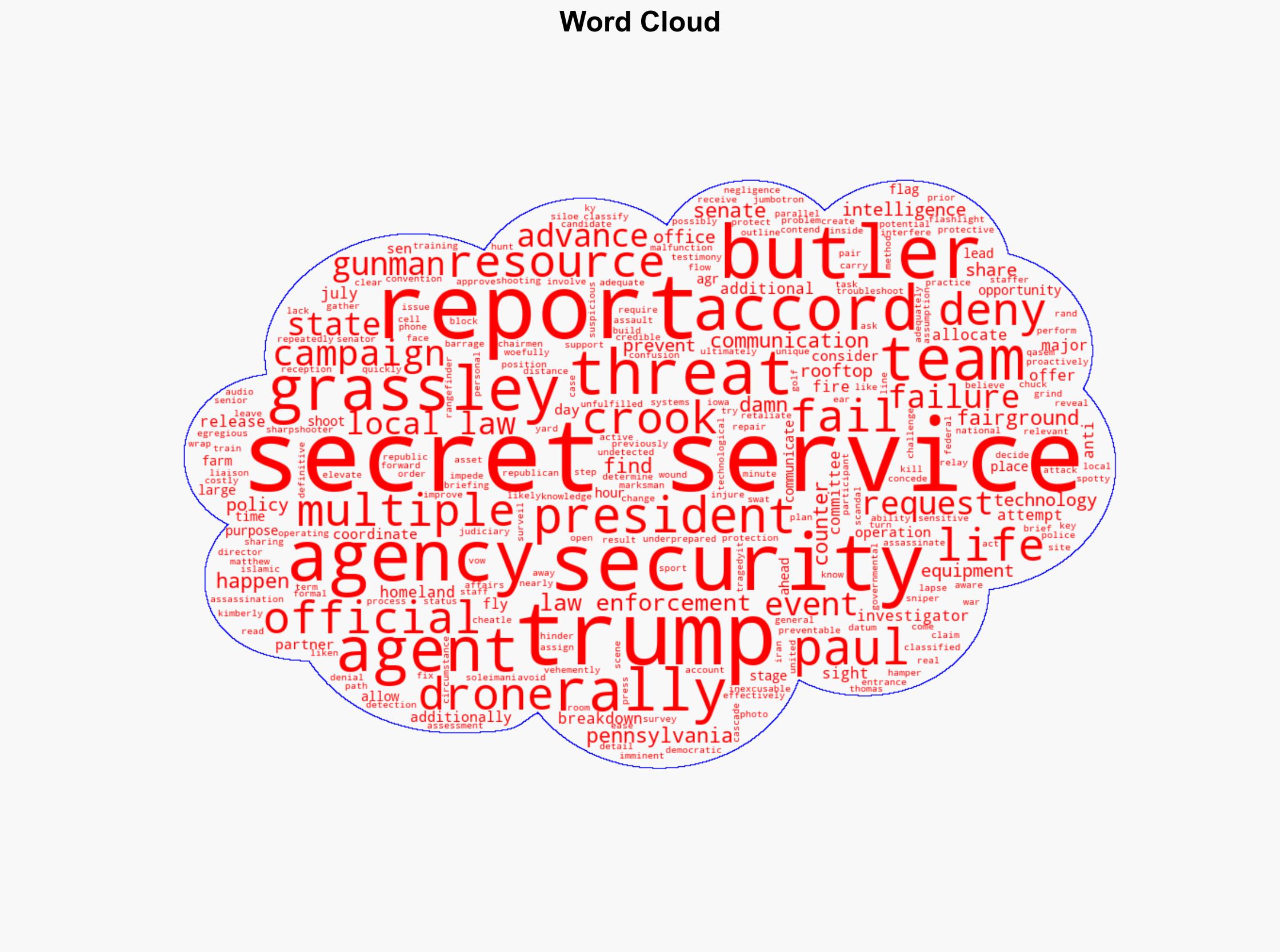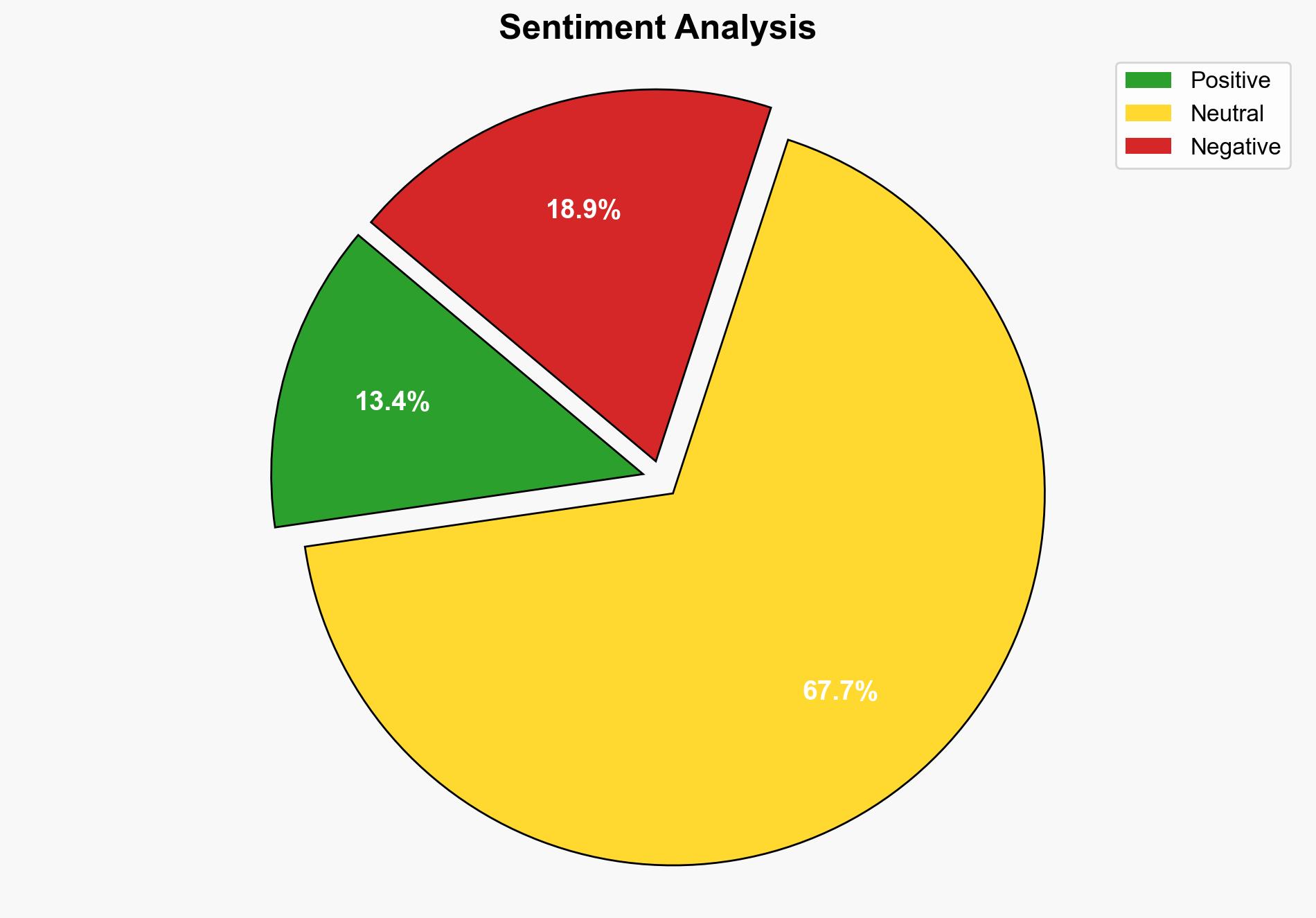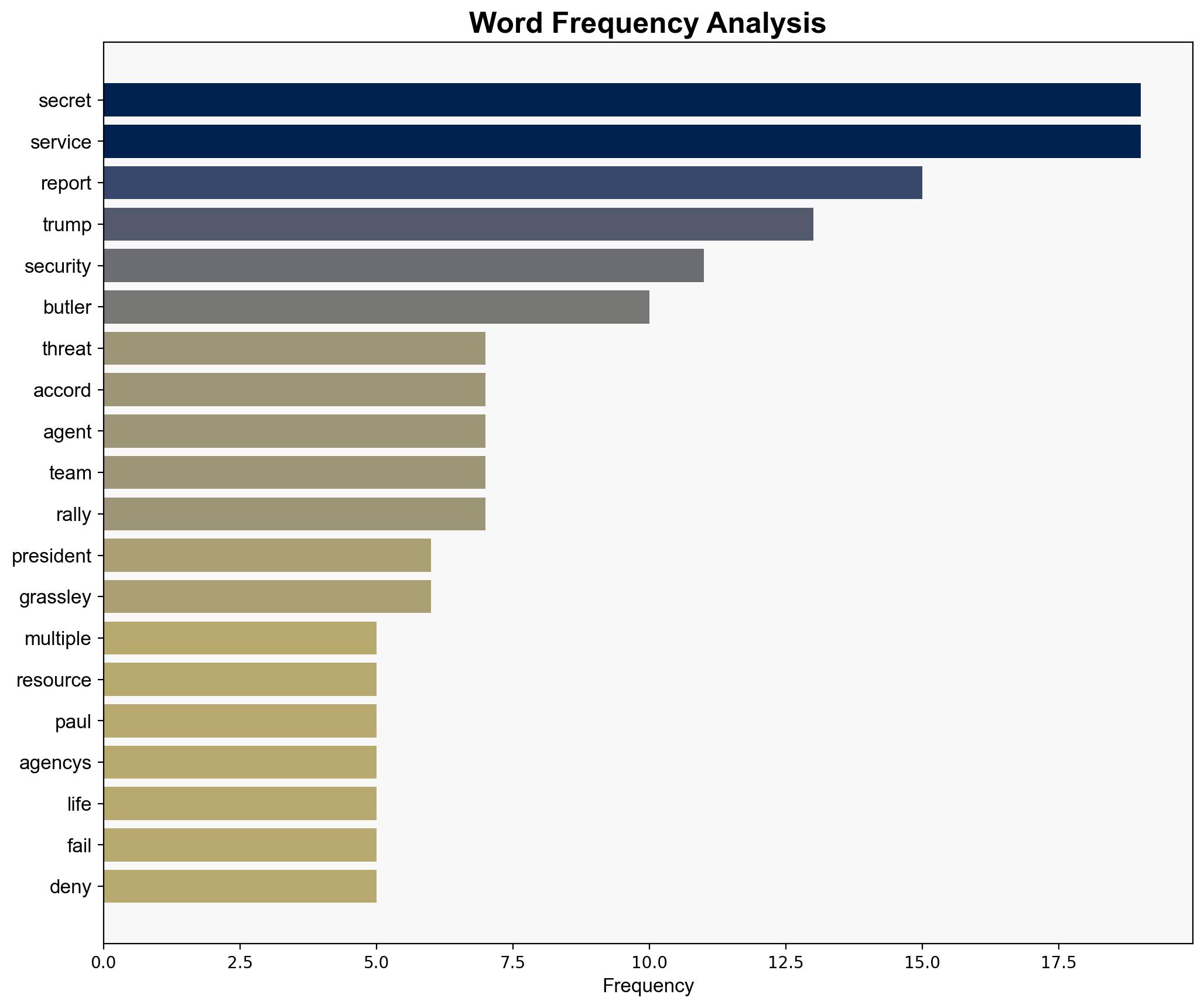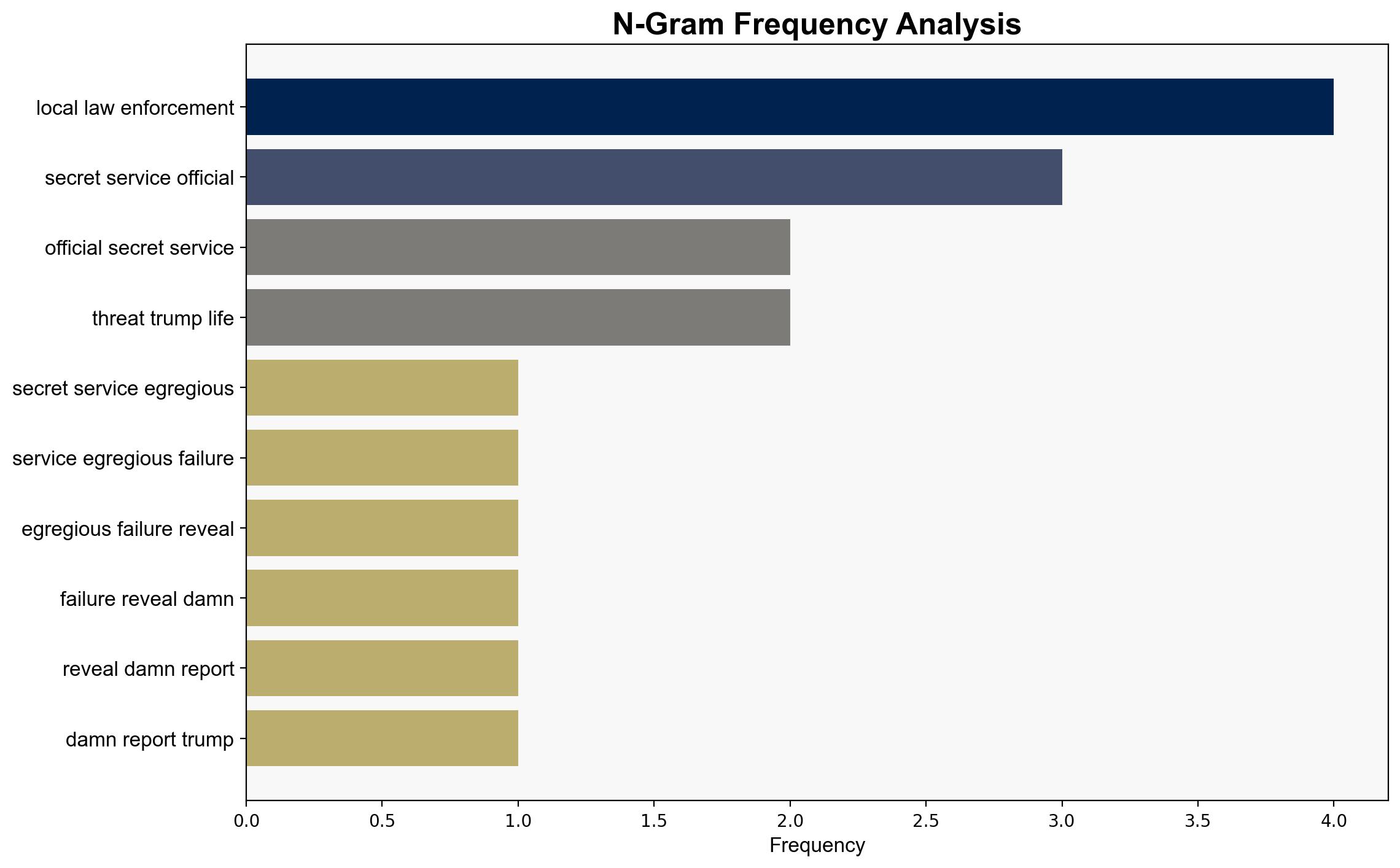Secret Services most egregious failures revealed in damning reports on Trumps attempted assassination – New York Post
Published on: 2025-07-15
Intelligence Report: Secret Services Most Egregious Failures Revealed in Damning Reports on Trump’s Attempted Assassination – New York Post
1. BLUF (Bottom Line Up Front)
The Secret Service faced significant operational failures during an attempted assassination of Donald Trump in Butler, Pennsylvania. Key issues included breakdowns in communication, inadequate resource allocation, and failure to address known threats. Recommendations focus on enhancing inter-agency communication, improving training, and ensuring resource readiness.
2. Detailed Analysis
The following structured analytic techniques have been applied to ensure methodological consistency:
Cognitive Bias Stress Test
Potential biases were identified in the assessment of threat levels and resource allocation decisions. Red teaming exercises highlighted the need for more robust threat assessment protocols.
Bayesian Scenario Modeling
Probabilistic forecasting indicates a moderate likelihood of similar threats recurring if systemic issues are not addressed. Escalation scenarios suggest increased risk without intervention.
Network Influence Mapping
Analysis of influence networks revealed gaps in coordination between the Secret Service and local law enforcement, impacting the effectiveness of security measures.
3. Implications and Strategic Risks
The failure to adequately prepare for and respond to the assassination attempt exposes vulnerabilities in national security protocols. These systemic issues could lead to increased risks of political instability and undermine public confidence in protective services. The potential for cascading effects includes heightened threats from state and non-state actors exploiting these weaknesses.
4. Recommendations and Outlook
- Enhance training programs focused on threat assessment and resource deployment.
- Improve communication channels between federal and local agencies to ensure timely information sharing.
- Invest in technological upgrades to address surveillance and communication deficiencies.
- Scenario-based projections:
- Best Case: Implementation of recommendations leads to fortified security protocols and reduced threat levels.
- Worst Case: Continued systemic failures result in successful attacks and increased political instability.
- Most Likely: Partial improvements lead to moderate risk reduction but persistent vulnerabilities.
5. Key Individuals and Entities
Donald Trump, Chuck Grassley, Rand Paul, Kimberly Cheatle, Thomas Matthew Crooks
6. Thematic Tags
national security threats, cybersecurity, counter-terrorism, regional focus





